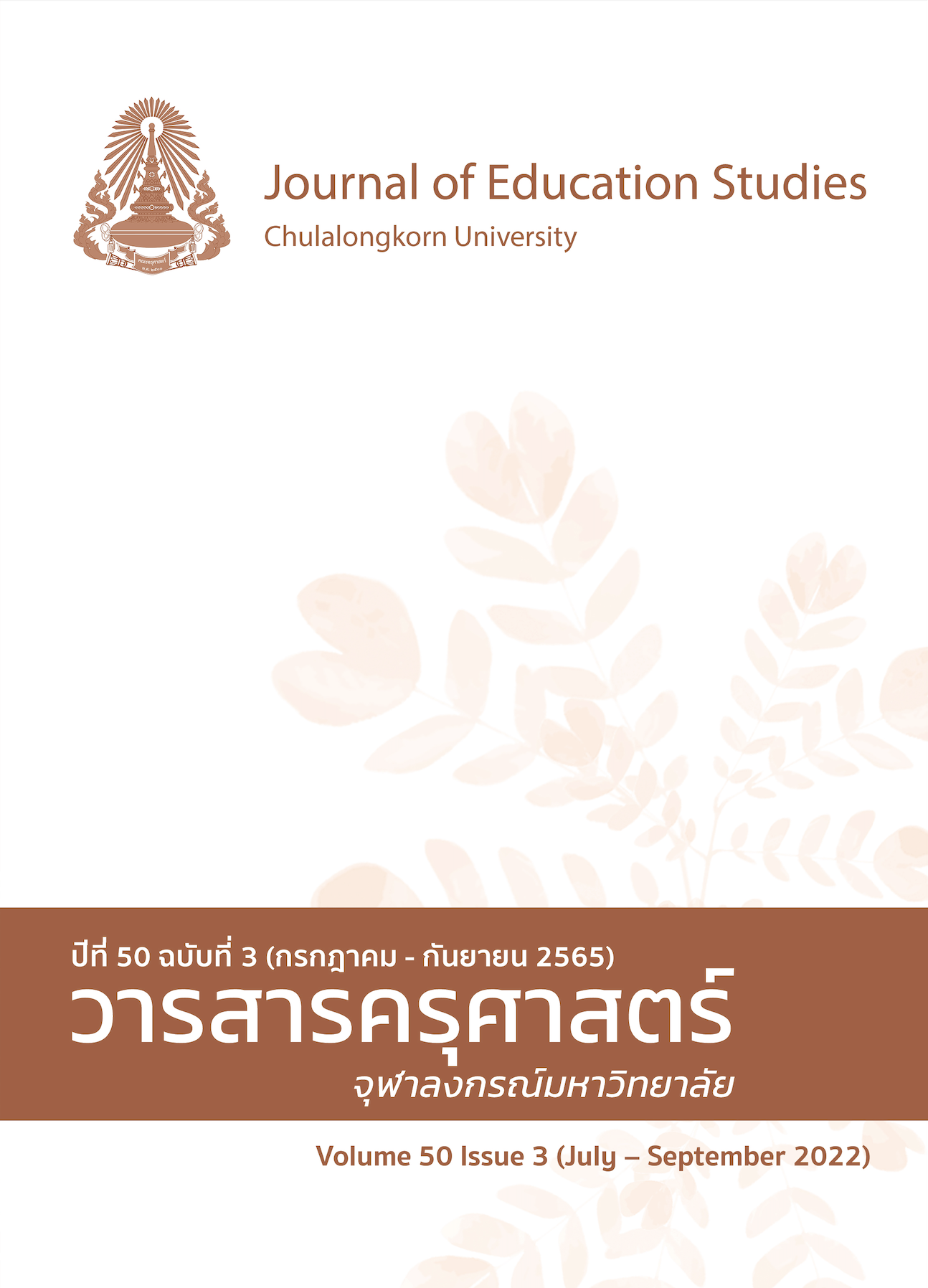Remote Labs for Automation Engineering and Technical and Vocational Education: Proposing a New Training Model
DOI:
https://doi.org/10.14456/educu.2022.24Keywords:
automation, empowered training model, rubricsAbstract
This research intended to explore the existing skill of automation, develop and implement a new online training model for automation engineering students who are working in the industrial automation-engineering field to improve their professional skills, and lastly to evaluate the learning outcomes. This was quasi-experimental research. Two groups were performed with the use of a pre-test and post-test to compare the results of skill evaluation tests of two groups of students. Twenty working persons who have been working in the industrial automation-engineering field in Singapore were selected as samples and were grouped into two groups: the control group and the experimental group. The new training model, “Empowered Training Model”, was used as a treatment for the experimental group, and the control group received a conventional training model. Rubrics from the American Association of Colleges and Universities were used in the skill evaluation process. The research data was analyzed with SPSS statistic software. The student’s professional skills of problem-solving, critical thinking, creative thinking, inquiry and analysis, and lifelong learning skills were observed and evaluated. Also, the research hypotheses were tested with an independent sample t-test and paired sample t-test. The results showed that the new TVET training model effectively improves students’ learning outcomes.
References
Accreditation Board for Engineering and Technology. (2018). Criteria for accrediting engineering technology programs.
ABET. https://www.abet.org/wp-content/uploads/2018/11/T001-19-20-ETAC-Criteria-11-24-18.pdf
Bal, M. (2014). Assessment of remote laboratory practices in engineering technology distance education. 2014 ASEE
International Forum Proceedings. https://doi.org/10.18260/1-2--17168
Barrows, H. S., & TamblynN, R. M. (1980). Problem-based learning: An approach to medical education. Springer.
Billett, S. (2009). Realising the educational worth of integrating work experiences in higher education. Studies in Higher
Education, 34(7), 827–843. https://doi.org/10.1080/03075070802706561
Choong, J. (2019). Education minister: Don’t see TVET as second-class or alternative choice. Malaysia. Malay Mail.
alternative-choice/1794548
Crawley, E. F., Malmqvist, J., Östlund, S., Brodeur, D. R., & Edström, K. (2014). Rethinking engineering education: The CDIO
approach. Springer Science & Business Media.
Healey, M. (2005). Linking research and teaching to benefit student learning. Journal of Geography in Higher Education,
(2), 183-201. https://doi.org/10.1080/03098260500130387
Hiebert, J., & Lefevre, P. (1986). Conceptual and procedural knowledge in mathematics: An introductory analysis. In James Hiebert (Ed.), Conceptual and Procedural Knowledge: The Case of Mathematics (pp. 113-131). Lawrence Erlbaum
Associates.
Knowles, M. (1975). Self-directed learning: A guide for learners and teachers. Follett.
Kolb D. (1984). Experiential learning: experience as the source of learning and development. Prentice Hall.
Kolb, A. Y., & Kolb, D. A. (2011) Experiential learning theory: A dynamic, holistic approach to management learning.
Armstrong: Management Learning, Education and Develop, 42-68.
https://www.researchgate.net/publication/267974468
Kolmos, A., (1996). Reflections on project work and problem-based learning. European Journal of Engineering Education,
(2), 141–148.
Mäkiö, J., Mäkiö-Marusik, E., & Yablochnikov, E. (2016). Task-centric holistic agile approach on teaching cyber physical
systems engineering. In Industrial Electronics Society, IECON 2016-42nd Annual Conference of the IEEE Industrial
Electronics Society. (pp. 6608–6614). IEEE Xplore. https://doi.org/10.1109/iecon.2016.7793806
Rhodes, T. L., & Finley, A. (2013). Using the VALUE rubrics for improvement of learning and authentic assessment.
Association of American Colleges and Universities.
Scanlon, E., Colwell, C., Cooper, M., & Di Paolo, T. (2004). Remote experiments, re-versioning and
re-thinking science learning. Computers & Education, 43(1–2), 153–163. https://doi.org/10.1016/j.compedu.2003.12.010
Tan, K. S., & Tang, J. (2016). New skills at work: Managing skills challenges in ASEAN-5. Singapore Management University.
Tyson, R. (2016). The didactics of vocational Bildung: How stories matter in VET research. Journal of Vocational Education
& Training, 68(3), 359–377. https://doi.org/10.1080/13636820.2016.1213762
United Nations Educational, Scientific and Cultural Organization. (2016). Strategy for technical and vocational education
and training (TVET) 2016-2021. United Nations Educational, Scientific and Cultural Organization.
Wiggins, G., & McTighe, J. (1998). Understanding by design. ASCD.
Downloads
Published
How to Cite
Issue
Section
License

This work is licensed under a Creative Commons Attribution-NonCommercial-NoDerivatives 4.0 International License.




